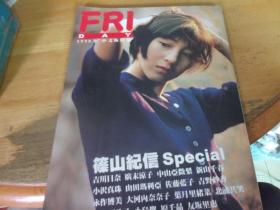
Kippenberger & Friends 基彭伯格和朋友:马丁·基彭伯格的对话
¥ 450 九五品
仅1件
作者Josephine Von Perfall
出版社DISTANZ
ISBN9783954760053
出版时间2013-03
装帧精装
页数224页
上书时间2021-06-14
- 最新上架
商品详情
- 品相描述:九五品
- 商品描述
-
German artist Martin Kippenberger died in 1997 (b. Dortmund 1953). His work has been internationally celebrated since his death and now occupies a solid place in the most important art collections and museums in the world. Now as then, the question as to the value of his work triggers lively debate: praised as the Beuys of the 1980s, the German Warhol or Picabia’s successor, he is equally well known as a dilettante and genius, enfant terrible and provocateur, relentless networker and visionary. Largely ignored by the art market for decades, he strove for recognition, which he initially received from only a small circle. For Kippenberger, who was merciless in his criticism, there was no joke too personal or too close to the bone, no provocation too injurious in testing how far he could go, not only with his opponent, but also with himself. The professional selfpublicist understood like no other before him in Germany how to make a show out of his art and his life, always doing so in a way that simultaneously pushed back the boundaries of art itself. Once the ball was rolling, it was not allowed to stop. Kippenberger spared neither himself nor others and his short but intense life and extremely diverse corpus of work are a testament of this. The interview book ""Kippenberger & Friends"" comes closer to uncovering Kippenberger the myth, through 25 conversations with artists, curators, gallerists, and friends. And it is predominantly the latter who give us their view on someone who left a lasting impression on them, in descriptions that are contemplative, funny, critical, and also selfironic. The extremely personal memories bring to life not only Kippenberger himself; they also create a dense picture of the cultural life in a Germany which, torn between the sensationalist Springer press and student revolts, the hedonistic consumer culture of yuppies and the provocative rebellion of the punk scene, still had to become convinced of the maxims of its own actions. Josephine von Perfall started her doctorate degree on Martin Kippenberger in 2010 at the Department of History of Art at the University of Cambridge. The role he played in the development of postwar German art, in particular in his capacity as a "networker," cannot, von Perfall asserts, be overestimated, and it is this role that is the key to understanding one of the most important chapters in German postwar art."
德国艺术家马丁•基彭贝尔格于1997年逝世(b. dortmund 1953)。他的作品自去世以来一直享誉国际,目前在世界上最重要的艺术收藏和博物馆中占有一席之地。现在和那时一样,关于他的作品价值的问题引发了激烈的辩论: 被誉为20世纪80年代的波伊斯,德国沃霍尔或皮卡比亚的继承者,他同样被认为是一个业余爱好者和天才,是一个可怕的挑衅者,无情的交际者和有远见的人。几十年来基本上被艺术市场忽视,他努力争取认可,最初他只从一个小圈子得到认可。基彭伯格在批评时毫不留情,对他来说,没有一个玩笑太私人或太接近骨子里,没有一个挑衅太伤人,在试探他能走多远,不仅是对他的对手,而且是对他自己。这位专业的自我宣传家在德国前所未有地了解,如何将自己的艺术和生活展示出来,他总是以一种同时打破艺术界限的方式这样做。一旦球开始滚动,就不允许停止。基彭伯格既不放过自己,也不放过其他人,他短暂而紧张的生活和极其多样化的作品就证明了这一点。通过与艺术家,策展人,画廊老板和朋友们的25次交谈,访谈录“ kippenberger & friends”更接近于揭开 kippenberger 的神话。主要是后者给我们留下了深刻印象的人的观点,他们的描述是沉思的,有趣的,批判的,也是自我反省的。这些极其个人化的记忆不仅给吉彭伯格本人带来了生命,而且还为德国的文化生活描绘了一幅密集的图景,这幅图景在感官主义的斯普林格报纸和学生起义、雅皮士享乐主义的消费文化和朋克界的挑衅性反叛之间左右为难,仍然不得不相信自己行为的准则。约瑟芬•冯•帕弗尔(josephine von perfall)于2010年开始在剑桥大学(university of cambridge)艺术史系攻读马丁•基彭贝尔格博士学位。他在战后德国艺术发展中所扮演的角色,特别是他作为一个“社交家”的身份,不能被高估,冯 · 帕弗尔断言,这个角色是理解德国战后艺术中最重要的篇章的关键
基本信息
ASIN : 3954760053
出版社 : DISTANZ; 第 Bilingual 版 (2013年3月22日)
语言 : 英语, 德语
精装 : 224页
ISBN-10 : 9783954760053
ISBN-13 : 978-3954760053
商品重量 : 1.06 kilograms
尺寸 : 19.89 x 2.31 x 27.2 cm
相关推荐
-

FRI
八品绍兴
¥ 28.00
-

FRI DAY
八五品广州
¥ 100.00
-

FRI DAY
九品商丘
¥ 70.00
-

FRI DAY
八品阳江
¥ 98.00
-

Fri dsy gold 2024
八五品保定
¥ 45.00
-

FRI DAY杂志 8.24
九品沧州
¥ 200.00
-

KIPPENBERGER【外文原版 软精装】
九品北京
¥ 458.00
-

SARA BLAEDEL ALDRIG MERE FRI
九品运城
¥ 50.00
-

SARA BLAEDEL ALDRIG MERE FRI
九品嘉兴
¥ 50.00
-

Bli fri fran dina ryggbesvar
八品北京
¥ 150.00
— 没有更多了 —













以下为对购买帮助不大的评价